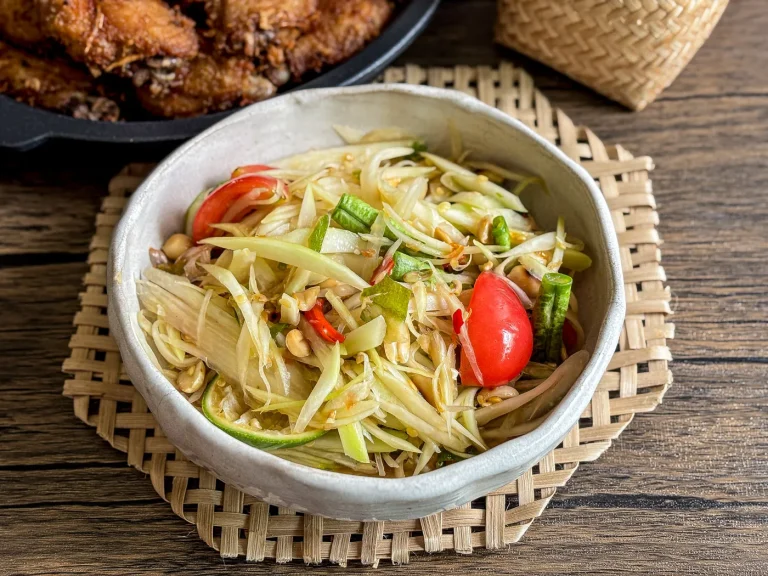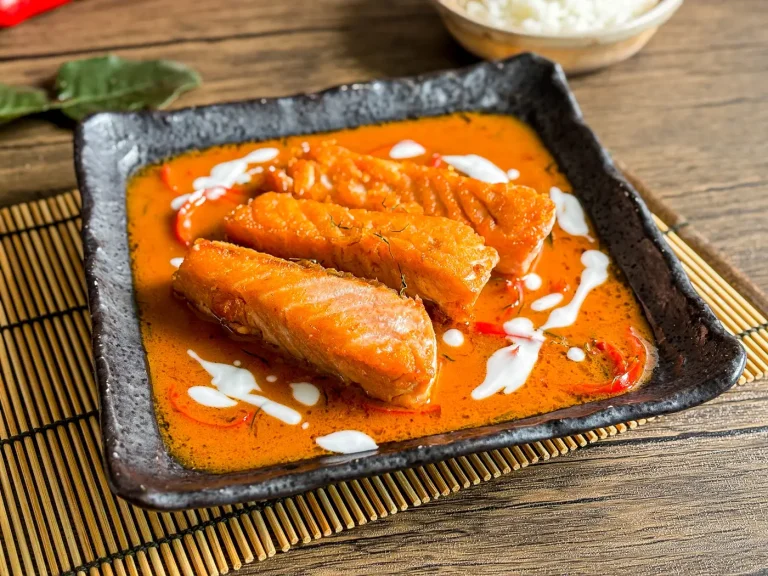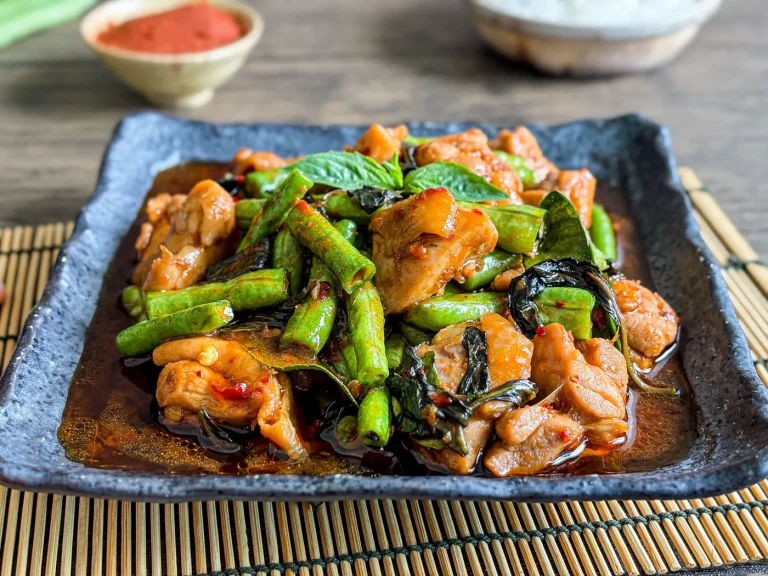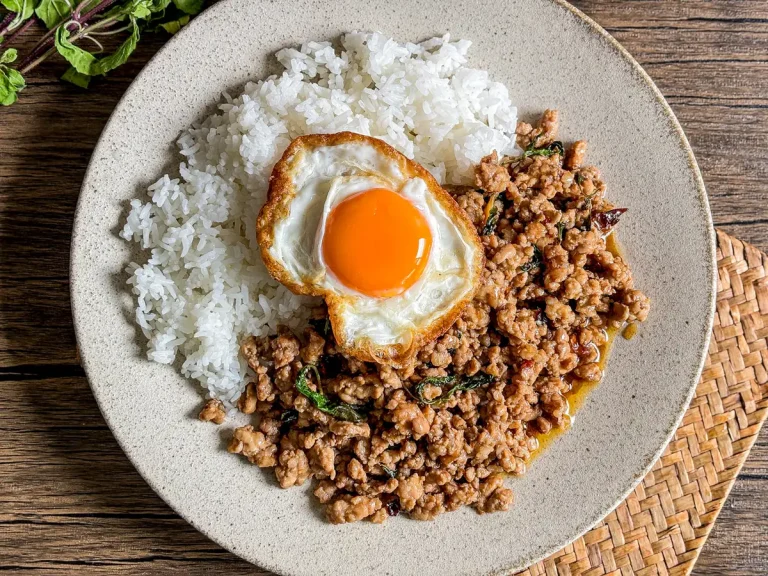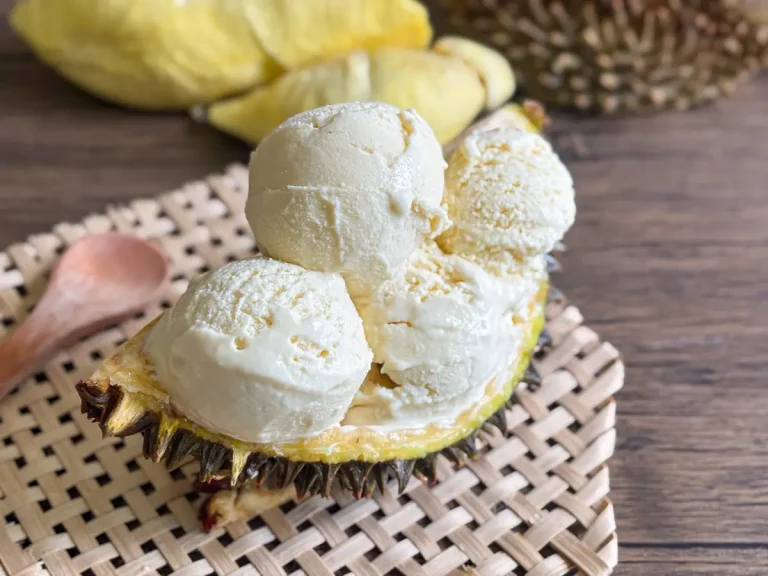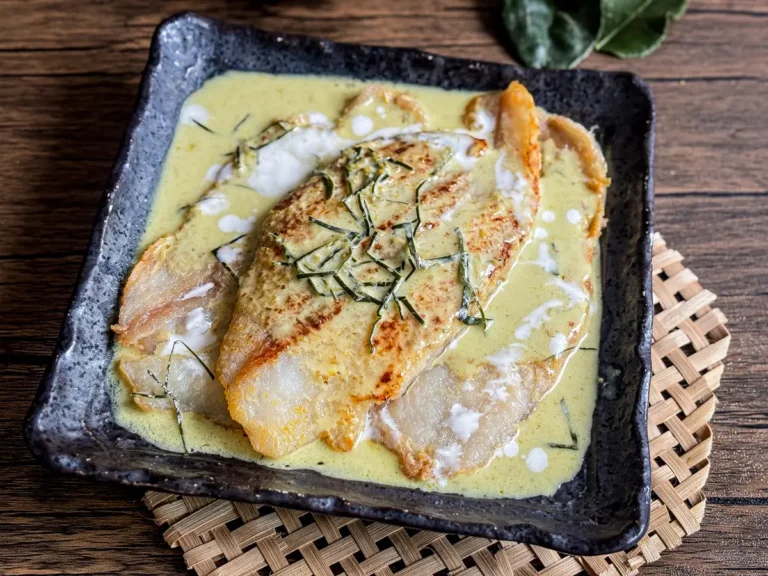Authentic shrimp pad Thai recipe inspired by the version I served at my Thai restaurant. An easy noodle stir fry made with traditional ingredients and a homemade sauce that beats anything you’d get from takeout!
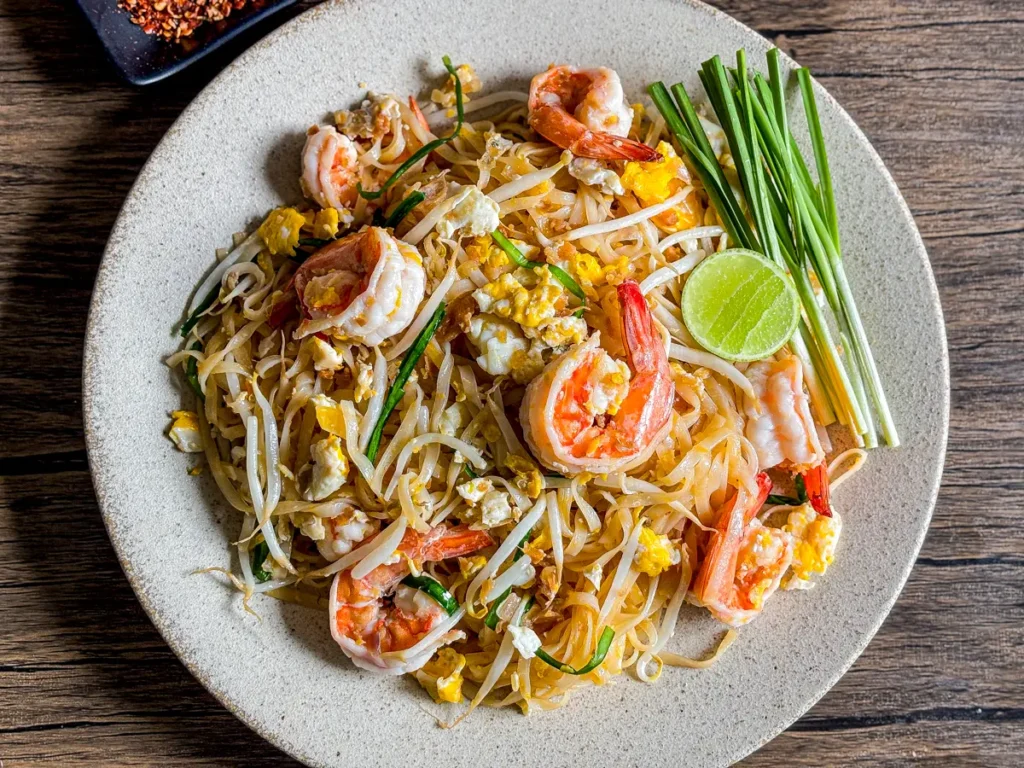
🤔 What is pad Thai shrimp?
Pad Thai shrimp is a Thai stir-fried noodle dish made with rice noodles, shrimp, eggs, tofu, and bean sprouts. It’s tossed in a sweet, tangy, and umami-rich sauce made from palm sugar, tamarind, and fish sauce, then garnished with crushed peanuts.
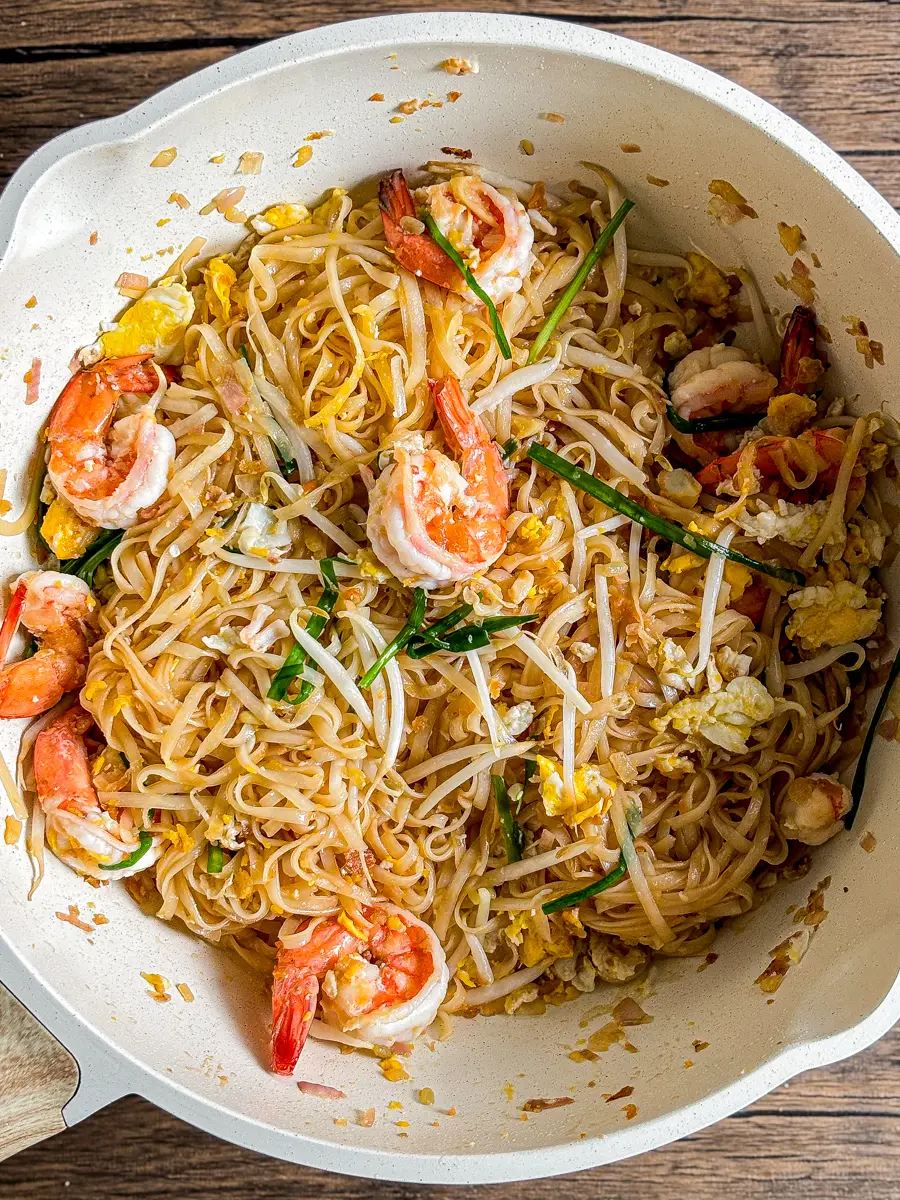
🍚 Ingredient notes and substitutes
For the pad Thai sauce
- Palm sugar Adds deep, caramel-like sweetness that’s different from white or brown sugar.
- Thai Tamarind paste Gives the sauce its signature tangy flavor. Make sure to use Thai-style tamarind paste, not the sweetened Indian kind.
- Fish sauce Provides saltiness and umami; use a good-quality Thai brand like Megachef for the best flavor.
- Water Thins out the sauce so it coats the noodles evenly during stir-frying.
For stir-frying the noodles
- Oil Used for stir-frying; neutral oils like vegetable or canola work best.
- Shrimp Use peeled, deveined shrimp (fresh or thawed from frozen).
- Shallots Adds natural sweetness and depth.
- Garlic A key aromatic that boosts flavor in stir-fries.
- Sweet preserved radish This is a lightly sweetened and salted radish with a chewy texture and savory-sweet flavor. It’s a traditional ingredient that gives the noodles their authentic street food taste. You can find it in small plastic packets at most Asian grocery stores.
- Rice noodles The flat, dried rice noodles (sen lek) are soaked until pliable.
- Water Used to help cook and soften the noodles while stir-frying.
- Egg Scrambled into the pan to create soft bits of cooked egg throughout the dish.
- Garlic chives Adds freshness and a light garlicky flavor. Green onions can be used if needed.
- Bean sprouts Tossed in at the end for a crunchy contrast and freshness.
👩🍳 How to make shrimp pad Thai
Soak dry rice noodles
Place the dry rice noodles in a large bowl and cover them completely with room-temperature water. Let them soak until they’re soft and pliable; check the package instructions for the time. The exact time depends on the brand and thickness of your noodles.
Make pad Thai sauce
Step 1: Melt palm sugar. Place a small saucepan over low to medium heat. Add palm sugar and let it melt slowly, stirring often, until it turns golden and fully dissolved.
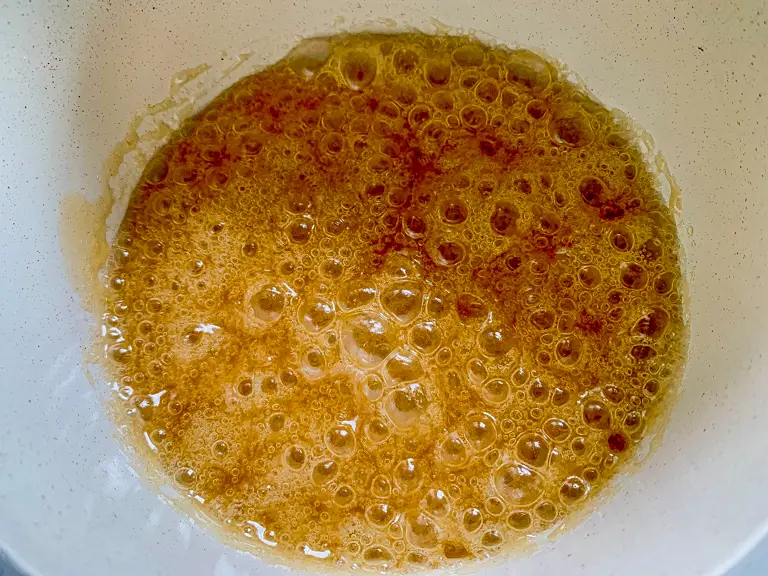
Step 2: Add remaining sauce ingredients. Once melted, pour in the fish sauce, tamarind paste, and water. Stir everything together until the sauce is smooth and well combined, then set aside.
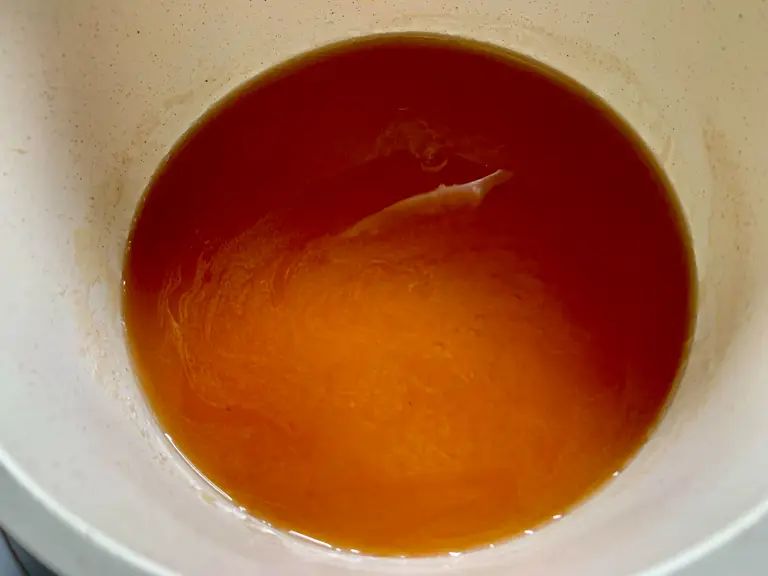
Stir-fry the noodles
Step 1: Cook the shrimp. Heat 1 tablespoon of oil in a large non-stick pan or wok over medium heat. Dip the shrimp briefly in the prepared Pad Thai sauce, then place them in the hot pan. Cook until pink and just cooked through, about 1–2 minutes per side. Remove and set aside.
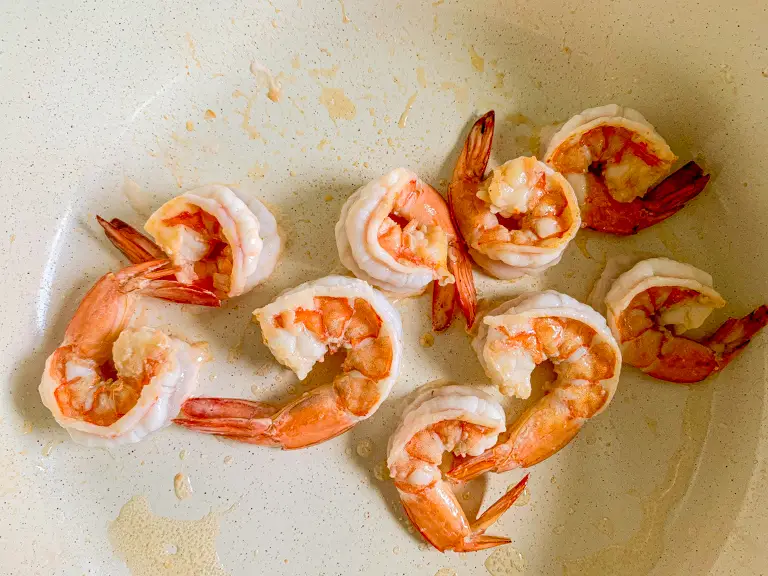
Step 2: Sauté aromatics and preserved radish. In the same pan, add the remaining oil. Sauté chopped garlic, shallots, and preserved radish over medium heat until fragrant and lightly golden.
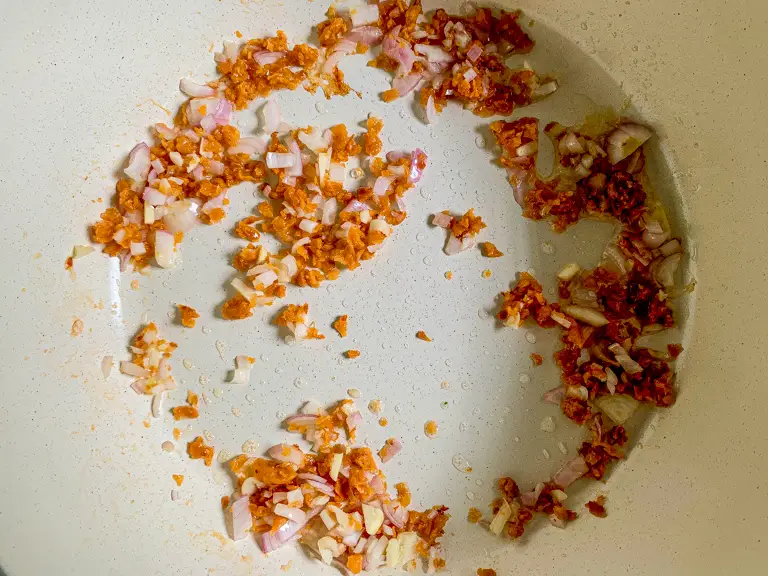
Step 3: Add the noodles. Drain the soaked noodles. Push the aromatics to one side of the pan and pour water into the empty space. Add the noodles and stir-fry them in the water until they begin to soften and loosen up.
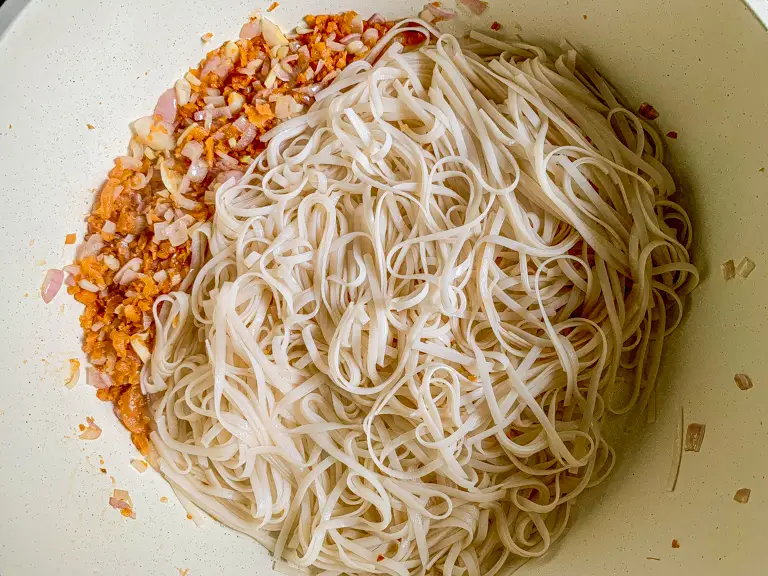
Step 4: Mix the noodles. Stir-fry the noodles to evenly coat with the aromatics.
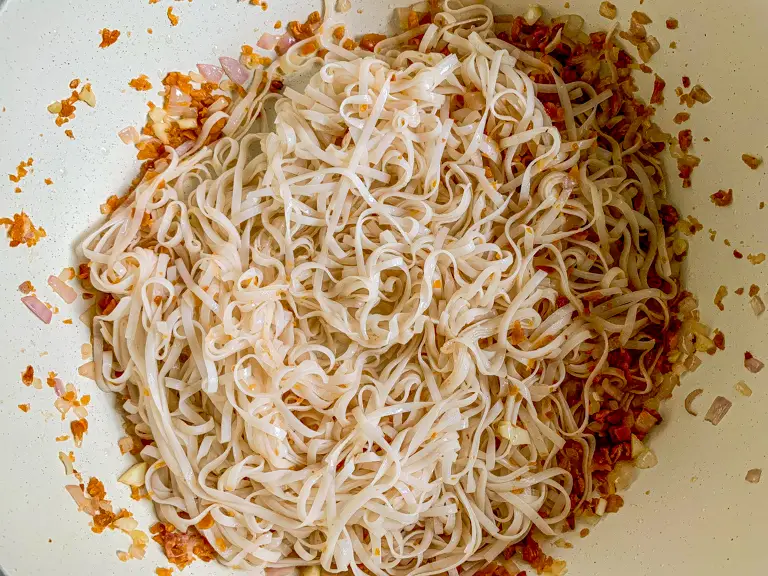
Step 5: Add the Pad Thai sauce. Pour in the prepared sauce and toss until the noodles are well coated and glossy.
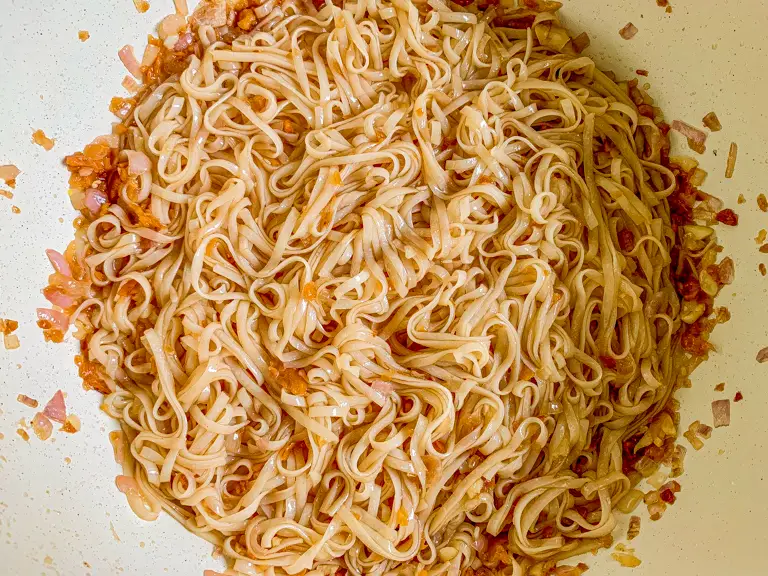
Step 6: Crack in the eggs. Push the noodles to one side of the pan and crack in the eggs. Let them set for a few seconds, then scramble and toss everything together.
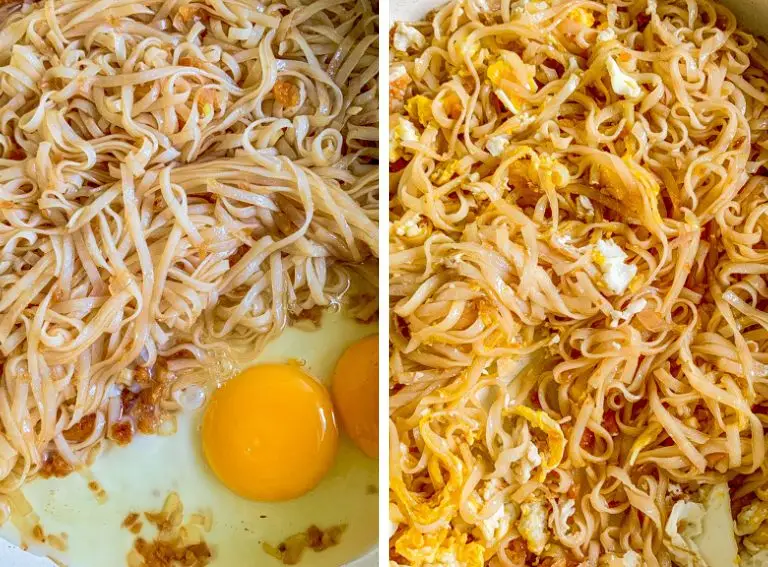
Step 7: Finish. Add the shrimp, bean sprouts, and garlic chives to the pan. Gently toss everything together until just warmed through; don’t overcook the veggies. Serve hot, topped with crushed peanuts, chili flakes, and a wedge of lime on the side. Enjoy!
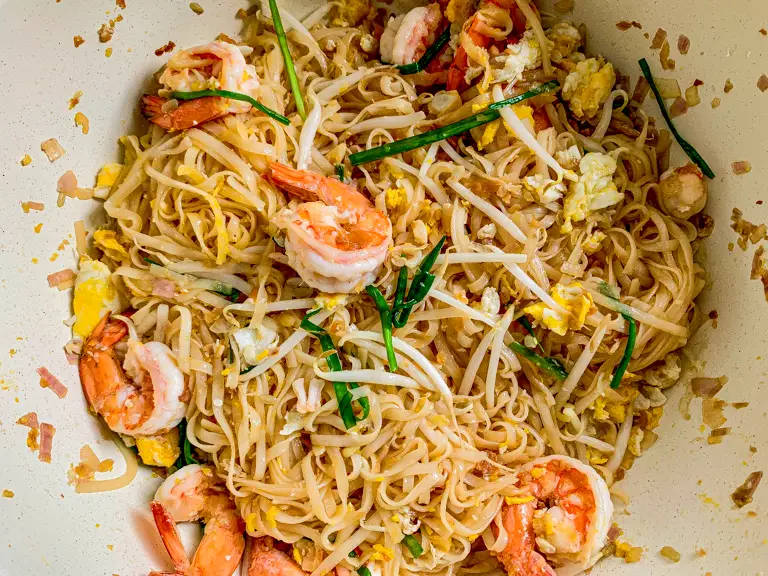
How to customize this recipe
- Protein: Swap shrimp for chicken, beef, or go vegetarian with tofu and your favorite vegetables.
- Noodles: Traditional rice sticks are best, but you can also use fresh rice noodles or glass noodles.
- Make it spicy: Sprinkle red pepper flakes when serving.
- Sauce: Adjust the amount to your taste; add more if you like it saucier. The sauce keeps well in the fridge for a few days!
🦐 More Thai shrimp stir-fries to try
I hope you enjoy this easy pad Thai shrimp noodles recipe as much as our customers did. It’s quick, packed with flavor, and truly tastes like the real deal. Please leave a comment if you try it, and follow me on social media: Facebook, Instagram, and Pinterest!
Authentic Shrimp Pad Thai Recipe
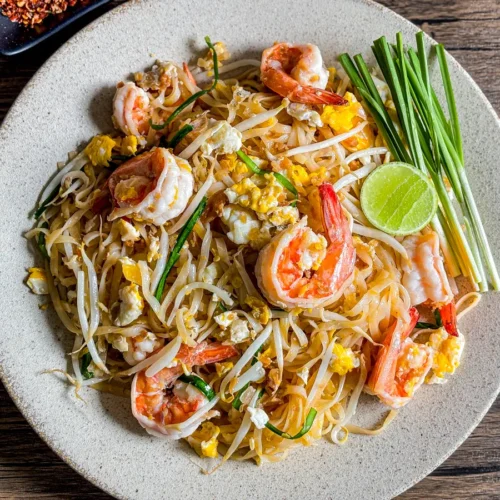
Equipment
- Measuring spoons and cups
- Knife and cutting board
- Large mixing bowl for soaking the noodles
- Small saucepan for making the sauce
- Wok or large non-stick skillet
- Spatula or wok turner
Ingredients
For the pad Thai sauce
- 100 g palm sugar
- 2 tbsp fish sauce
- 3 tbsp Thai tamarind paste
- 3½ tbsp water
For stir-frying
- 3 tbsp oil
- 12 shrimp peeled, deveined
- 2 cloves garlic minced
- ¼ cup shallots finely chopped
- ¼ cup sweet preserved radish chopped
- 150 g dry rice noodles
- 3½ tbsp water
- 2 eggs
- 1 cup bean sprouts
- 10 garlic chives
Optional toppings
- lime wedges to taste
- red pepper flakes to taste
- crushed peanuts to taste
- granulated sugar to taste
Instructions
Soak the noodles
- Place the dry rice noodles in a large bowl and cover them with room-temperature water. Soak until soft and pliable, according to package instructions. Drain before using.
Make the pad Thai sauce
- Melt palm sugar. In a small saucepan over low to medium heat, melt the palm sugar, stirring often until golden.
- Add remaining ingredients. Then add fish sauce, tamarind paste, and water. Stir until smooth and set aside.
Cook the shrimp
- Heat 1 tablespoon of oil in a large non-stick pan or wok over medium heat. Dip shrimp briefly in the prepared sauce, then pan-fry until pink and cooked through, about 1–2 minutes per side. Remove and set aside.
Stir-fry the noodles
- Sauté aromatics. In the same pan, add the remaining oil. Sauté the garlic, shallots, and preserved radish over medium heat until fragrant and lightly golden.
- Add the noodles. Push the aromatics to one side of the pan. Add a splash of water and the drained noodles to the other side. Stir-fry until the noodles are softened.
- Toss noodles. Mix everything together so the noodles are evenly coated with the aromatics.
- Add the sauce. Pour in the prepared sauce. Toss until the noodles are evenly coated and glossy.
- Add the eggs. Push noodles to one side of the pan. Crack the eggs into the empty space. Let them set for a few seconds, then scramble and mix into the noodles.
- Finish and serve. Add the cooked shrimp, bean sprouts, and garlic chives. Toss gently until just heated through. Serve hot with crushed peanuts, chili flakes, and lime wedges.
Notes
- Nutrition information is provided as a courtesy and should be considered approximate.
❓ Frequently asked questions
What to serve with shrimp pad Thai? It’s a complete meal on its own that’s typically served with lime wedges, crushed peanuts, and chili flakes for extra flavor.
How to season shrimp for pad Thai? While working in a Thai restaurant, I learned a simple trick: dip the raw shrimp into the pad Thai sauce before pan-frying. This infuses them with flavor and helps them caramelize beautifully in the pan, no extra marinade needed!

